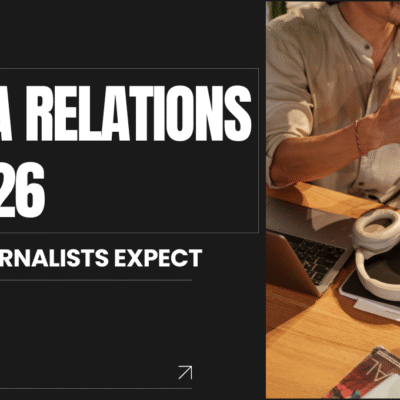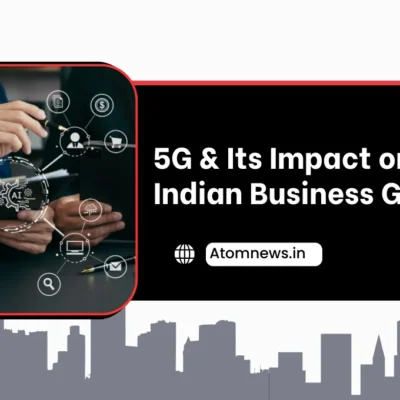Crisis communication has become one of the most defining aspects of modern Public Relations in India. With social media amplifying issues within minutes and consumer sentiment shifting rapidly, the way a brand responds during a crisis often matters more than the crisis itself. In recent years, several Indian brands across FMCG, tech, aviation, food delivery and retail have faced intense public scrutiny. While some handled the situation with transparency and agility, others struggled—leading to long-term reputation damage. These real-world examples offer valuable lessons for how Indian brands should prepare for and manage crises in 2026 and beyond.
The Importance of Speed: Acting Before Narratives Solidify
In India’s digital environment, public perception can change in a matter of hours. Brands that act quickly often regain control of the narrative, while delayed responses allow misinformation to spread. One of the clearest lessons comes from incidents where brands took too long to issue a statement, giving space for speculation and negative commentary. The most effective responses come from brands that acknowledge the situation early, provide verified information and commit to regular updates. Speed, however, must be paired with accuracy; issuing a rushed statement without facts can worsen the issue. The right balance builds credibility and demonstrates responsibility.
Transparency Builds Trust—Silence Invites Suspicion
Indian audiences today expect honesty, clarity and accountability. When brands attempt to downplay an issue, offer vague explanations or remain silent, the backlash often intensifies. Transparency does not mean disclosing every internal detail—it means clearly sharing what happened, what is being verified and what steps the organisation is taking. Brands that adopt an honest and empathetic tone gain public trust even when the news is unfavourable. The shift toward transparency is especially visible in consumer-facing sectors, where audiences closely track brand behaviour on social media and expect direct acknowledgement.
Empathy and Human-Led Messaging Matter More Than Corporate Scripts
Crises often involve real people—customers, employees, stakeholders—and the tone of the response plays a critical role in shaping public reaction. Brands that respond with empathy, acknowledging concerns and emotions, are more likely to soften negative sentiment. In contrast, statements that sound overly legal, defensive or corporate create distance and frustration. Indian audiences connect better with communication that is human, respectful and emotionally aware. A crisis response should never simply aim to protect brand image; it must also acknowledge the impact on people and show genuine concern.
Consistency Across Channels Prevents Confusion
During a crisis, multiple narratives can emerge simultaneously—on Twitter, Instagram, WhatsApp, LinkedIn, and news portals. If a brand releases scattered or contradictory messages across platforms, confusion and distrust spread quickly. Consistency is essential in maintaining control of the conversation. Brands that prepare a central message framework, aligned talking points and a verified update cycle manage crises more effectively. Whether through press statements, CEO messages or social media posts, the core narrative must remain unified. Consistency does not mean repetition—it means strategic alignment.
Leadership Visibility Strengthens Credibility
Indian audiences respond positively when leadership addresses a crisis directly. When CEOs or founders step forward with clear statements, responsibility and authority are immediately conveyed. This personal accountability helps audiences feel reassured that the issue is being taken seriously at the highest level. In contrast, crises managed only through generic brand statements often lack the emotional weight needed to rebuild trust. Leadership does not mean overexposure—it means showing up at the right moments with the right message.
Listening Is as Important as Speaking
The biggest mistake brands make is pushing out statements without understanding what people are actually upset about. Effective crisis communication requires active listening across social media, customer service channels, media coverage and internal feedback loops. Monitoring sentiment helps brands identify misinformation early, address key concerns and adjust messaging accordingly. Brands that listen well respond better. This approach helps in preventing escalation and in demonstrating that the organisation cares about the audience’s perspective—not just its own reputation.
Preparedness Determines Response Quality
Crisis management cannot be improvised. Indian brands that handled crises well were those with structured crisis plans: media protocols, spokesperson training, internal escalation processes and pre-approved messaging templates. Those without preparation appeared reactive, inconsistent or confused. Preparedness ensures clarity under pressure and helps teams act with confidence rather than fear. As crises become more complex and unpredictable, having a robust communication framework is no longer optional—it is essential.
Owning Mistakes Helps Contain Damage
Denial, dismissal, and blame-shifting are some of the fastest ways to intensify backlash. When brands accept responsibility, outline corrective actions and follow through with visible efforts, public sentiment often recovers faster. The Indian audience has shown repeatedly that it values accountability over perfection. A brand that owns its mistakes appears stronger than one that avoids responsibility. Sincere apologies, corrective measures, and transparent follow-ups are powerful tools in rebuilding credibility.
Post-Crisis Actions Define Long-Term Reputation
A crisis doesn’t end with the last official statement. Audiences judge brands based on how they act afterward—whether promises were kept, changes were implemented and trust was rebuilt. The brands that emerge stronger are those that treat crises as an opportunity to improve systems, enhance policies and communicate these improvements openly. Post-crisis storytelling, community engagement and internal alignment all contribute to long-term reputation recovery.
The Bottom Line
Indian brands today operate in a high-transparency, high-speed digital environment where crises are inevitable but brand damage is not. The difference lies in how organisations prepare, respond and communicate. Crises reveal not just gaps in processes but the true values of a brand. The strongest brands are those that respond with speed, empathy, clarity and accountability. For Indian companies moving into 2026, crisis communication is not just a PR function—it is a leadership function that shapes public trust.





